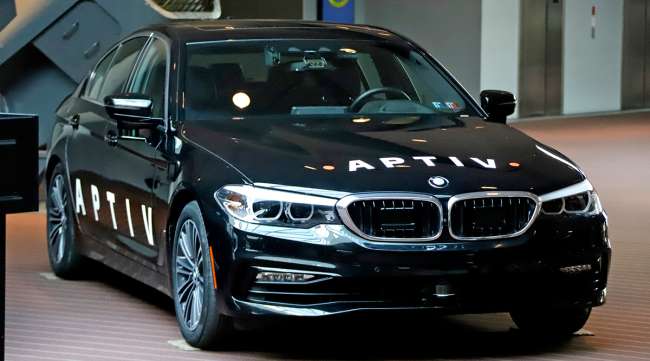Senior Reporter
Sen. Wicker: Commerce Committee’s Agenda to Include Autonomous Vehicle Policy

The U.S. Senate panel with jurisdiction over the trucking industry likely will take up autonomous vehicles technology policy during the 116th Congress.
Commerce Committee Chairman Roger Wicker (R-Miss.) said the panel’s agenda for the term includes crafting a framework that would guide technology firms operating in the autonomous vehicle sector.
Wicker emphasized his objective would be to produce comprehensive legislation that enhances highway safety and captures “the way we think about how people and goods are transported from hub to hub and around the country.”

Wicker
“There are wrinkles that need to be ironed out, but I think we can get there,” Wicker told executives at the U.S. Chamber of Commerce on May 16.
Wicker and fellow transportation leaders on Capitol Hill have endorsed the potential safety benefits that would stem from fleets of autonomous cars and trucks. Such vehicles would include sensors and other software designed to avoid collisions.
Wicker’s Democratic colleagues have signaled an interest in taking up an autonomous vehicles bill in the near term.
The senator’s House counterpart, New Jersey Democratic Rep. Frank Pallone, has said he intends to review myriad vehicle safety technologies during hearings of the Energy and Commerce Committee.
In a joint statement, Pallone and Rep. Jan Schakowsky (D-Ill.), chairwoman of the Consumer Protection and Commerce Subcommittee, noted that technologies designed to reduce vehicle-related deaths already are available for motorists.
“While we look toward a future of self-driving cars, we should not forget about the lifesaving technology available right now,” the House Democrats said recently.
Earlier this year, House Republicans on the Energy and Commerce Committee urged Pallone to consider a self-driving vehicles bill. Energy and Commerce Committee ranking member Greg Walden of Oregon, and Reps. Bob Latta of Ohio and Cathy McMorris Rodgers of Washington argued that besides potential economic benefits, safety on the roadways likely would improve with automation. And, they said, the technology could be deployed to help the elderly and disabled access retail and medical facilities.
“We have outdated standards and unnecessary barriers, which are slowing the development and deployment of self-driving technology,” the House Republicans added.
Bipartisan legislation that would have governed new vehicles equipped with autonomous features was passed in the House last year, yet did not advance in the Senate. The congressional session adjourned without the bill clearing for the president’s desk. Privacy and safety concerns were cited by the bill’s opponents.
The integration of automation across our transportation system has the potential to increase productivity and facilitate freight movement.
Secretary of Transportation Elaine Chao
Last year, the U.S. Department of Transportation announced updated guidance on autonomous vehicles that aims to advance multimodal safety and reduce policy uncertainty.
“The integration of automation across our transportation system has the potential to increase productivity and facilitate freight movement. But most importantly, automation has the potential to impact safety significantly by reducing crashes caused by human error, including crashes involving impaired or distracted drivers, and saving lives,” Secretary of Transportation Elaine Chao said in a statement that accompanied the rollout.
Stakeholders urging members of Congress to advance autonomous vehicle legislation include the Alliance of Automobile Manufacturers. In May, the group’s interim president, Dave Schwietert, pointed to the technology’s expected role in assisting people with disabilities. As he put it, “This dialogue that we’re having is key to our long-term efforts to provide broader access to transportation, which is only possible because of the innovations and safety benefits that are possible with [autonomous vehicles] technologies.”





